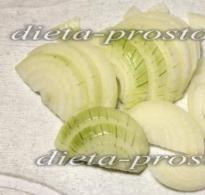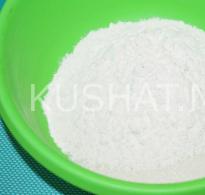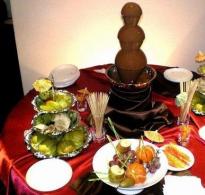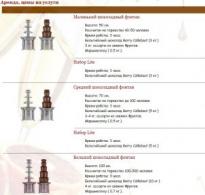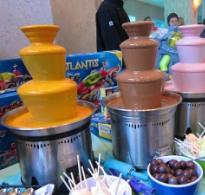Delicious cheap wines. How to choose quality wine: expert advice
Do you know how to choose wines? Is that serious? Of course, not at the level of an amateur sommelier, but at least with an accurate understanding - what are you paying for and what will you get in the end?
After all, it is very sad to watch people who regularly drink wine, but each time they enter the wine department with a surprised face. Like, nothing to itself - what only is not present! Then they quickly choose something according to the “CC” (color-price) principle, and in the evening they complain that they drink “some kind of disgusting thing”.
Using my own experience of buying and drinking wine in Nizhny Novgorod, we collected 7 basic advice, which will help you choose this drink in the store more or less successfully.
And “successful” in our understanding is the result with a good impression and without noticeable financial costs.
1. Look for wines in unsightly supermarkets near the house and in large hypermarkets like "Lenta" or "Ashana".
Alas, in wine boutiques, despite the assortment and service, the markup on wines is quite large.
But in grocery stores, the "churn" of goods is usually so active that management tends to quickly get rid of certain items.
For example, from wines of medium price category- hence discounts and various promotions.
2. Pay attention to the wines of unpopular states.
It is clear that the wines of France or Italy attract attention on the shelves, but to find good wine from these countries within 300-500 rubles is quite difficult.
Look on the labels for the names of states that are associated with winemaking to a lesser extent: Macedonia, Serbia, Slovenia, Uruguay, Romania.
In such countries, wines are most often made from local grape varieties, knowing exactly how to deal with them. They put only the best samples on the international market, and competition forces them to significantly reduce prices.
3. Look for wine made from only one grape variety.
Pros often say that mixing 2-3-4 varieties in one bottle is an attempt to hide the abomination of low-quality grapes with some other taste.
And this means that, first of all, you should pay attention to "single-varietal" wines. Take Russian rkatsiteli, Italian nebbiolo, Spanish verdejo or Chilean carmener without any impurities.
And try to catch the varietal characteristics in taste and aroma, and not the features of an incomprehensible cocktail.

4. Accumulate knowledge and experience.
Remember the wines that you have already drunk - regions, varieties, blends, years, prices. Learn to correlate the concepts of price and quality (taste). Come in wine departments(even if you don't need anything) - take the bottles in your hands, read the labels, get acquainted with expensive wines that you can't afford yet.
Try to improve your wine culture. So it will be much easier for you to make a choice in favor of a tasty and financially adequate wine. You will also get +10 to the "Interesting Conversation" skill.
5. Look for imported wines with a bright and prominent label.
Many small European (and also Australian and South African) wineries are trying to “break into” the market using a catchy label. So they attract the attention of potential buyers.
Boring castles and coats of arms on the label? This is the lot of precious "Chateau" or fake Russian liquor. Cartoons and comics in Spanish wine? Perfect option- take immediately.
Of course, there is no guarantee that such a wine will be noticeably cheaper than others, but the fact that it will be tasty is almost 100%!

6. Buy dry wine.
It is dry wine that allows you to catch all the necessary qualities and characteristics. Semi-dry wines are also normal, but not for all countries.
In addition, dry wines are often cheaper than semi-dry, semi-sweet and sweet (especially). The point is simplified production and marketing - semi-sweet wines in Russia, alas, are still very popular.
7. Read the label carefully.
Read the text. It often happens that for some reason "Spanish" wine is bottled in the Krasnodar Territory.
Leave nothing unattended. Be sure to find the date of bottling. While wines don't usually have a shelf life, it's worth drinking inexpensive drinks in the first two years of their existence.
In the end, see that the bottle has excise stamp. There were no traces of glue or other signs of forgery.
Adequately correlate the price and the label. On a bottle for 230 rubles there should not be the phrases: “divine wine”, “piercing taste of berries” and “ten-year exposure”.

Lastly, don't hesitate to ask for advice from those who "know a little more than you." Often the answer to a small question about wine turns into a whole conversation about gastronomy and travel. Followed by drinking.
Subscribe to our blog wfd_nn and find out Interesting Facts about delicious and inexpensive wines, which are sold in Nizhny Novgorod.
It is known that preferences for alcoholic beverages are a purely individual matter. Give one something stronger - whiskey or vodka, others drink only, others enjoy only beer. A large number of fans gathered semi-sweet wine.
Many lovers of dessert and dry wines do not refuse the opportunity to taste semi-sweet, as it is a kind of “transitional option”.
But taking the first thing that comes across from the store shelf, focusing only on the price, is a dangerous business. Let's find out which brands are worth buying if you want to be pampered and in family budget don't make a hole.
Grapes for the production of different varieties can be used the same, the difference is in the cooking method. If it ferments naturally until all the sugar is converted into alcohol content, then semi-sweet is obtained, at a certain moment “slowing down” fermentation.
Eventually finished product contains 30 to 80 grams of sugar per liter (i.e. 3 to 8%). Let's choose the most delicious and healthy?
Top Brands
Of course, you can not impose your own tastes on others. Each taster will name those brands of semi-sweet that he likes and this will by no means mean that all others are unworthy of attention. But, if you listen to the opinion of connoisseurs, some rating can still be built.
Red
The leading producer of red semi-sweet excellent quality can be considered Georgia. Since Soviet times, the inhabitants of our country remember:
- Kindzmarauli.
- "Khvanchkara".
- Alazani Valley.
Very good wines from other places. These include brands:
- Cabernet Sauvignon.
- Pinot black.
- "Fanagoria".
Red is not only pleasant, but also very useful for the heart and blood vessels, as well as for nervous system- of course, in small doses.
White
 White is often preferred by people who have an allergic reaction to red.
White is often preferred by people who have an allergic reaction to red.
It is also great, except that it does not have such a full taste and rich aroma.
Although the true lovers of white are ready to argue with the last statement! Soul asks for white wine? Choose:
- "Rangen".
- "Maestranteblanco".
- "Milk of a Beloved Woman"
Pink
Rose wines occupy their own niche. If you are a fan of them, then you will surely agree with the statement that Burlesque and Domaine de Roses will be in the first places in the ranking of the best.
Countries where high-quality semi-sweet is produced are:
- Georgia.
- Abkhazia.
- France.
- Germany.
They know a lot about the production of great wines there.
What should you drink semi-sweet with?
Some people like to put this drink on the table before serving the main dishes. But you shouldn't do that, because high content sugar, such alcohol belongs to digestifs, and therefore it is drunk after a meal. Snack it fresh fruit- that would be the best option.
What to eat?
First of all, it is worth remembering which dishes are completely incompatible with semi-sweet. These are various pickles and smoked meats and any snacks that are prepared with the addition of vinegar. But the rest is open to full scope for creativity. You can use:
- seafood ( crab salad, lobsters);
- vegetables;
- fruits;
- candies;
- cakes.
But there should be few snacks so that they do not overshadow the taste of wine.

Is there a big difference?
Often people think: what kind of wine is better to drink - dry or semi-sweet? How significant is the difference?
Dry and semi-sweet
In terms of strength, the difference between dry and semi-sweet is small: the first reaches 9-11%, the second - up to 14%. Sugar content in dry no more than 1%.
This is the difference: dry drinks are allowed for people who have problems with blood glucose levels, who are ill diabetes, as well as those who have an increased body weight: for them, such wine is harmless, unlike semi-sweet.
Semi-dry and semi-sweet
When the raw material for a semi-sweet wine ferments for a certain amount of time, the winemaker stops the process artificially by introducing sulfur dioxide. The fermenting wort is separated from the yeast component. Then comes the filtration, after which the wine is bottled and left until clarified.
Approximately also semi-dry is prepared, only fermentation is stopped later, when sugar remains 1.5-2%. As a result, the strength of both drinks is almost the same, but sugar in semi-sweet is up to 8%, and in semi-dry - up to 2%.
What to choose?
Advising you to opt for a particular drink is like recommending a particular type of fish or chocolate: everyone has their own preferences. There are excellent representatives of all types of wines, so you will have to rely on your own experience.
You just need to consider: dry and semi-dry are easier to tolerate and contain almost no sugar, which is dangerous in some diseases. Otherwise, the difference is small.
We make semi-sweet from dry
If you were preparing wine at home, intending to treat your friends with something sweet, but it turned out dry, do it simply: add sugar. Try the drink and then pasteurize it for 10 minutes at a temperature of 70 0. That's the whole secret!

We shared our opinion on the taste and usefulness of wine. What do you think of these varieties? low alcohol drink? Write to us about your favorite brand - why do you love it so much? We will wait until we meet again!
With the current exchange rate and ever-increasing alcohol excises 500 rubles for a bottle of wine has become a psychological limit, below which many are simply afraid. However, we are convinced that there is life there too! Finding cheap and good wine on the shelves of our stores is not an easy task. The risk of running into “shmurdyak”, as sommeliers call low-quality drinks, is great. But there are a few rules, following which, you can make the right choice.
IN priority - South Africa, Chile, Argentina. Wine production in these countries is cheaper than in the whole world. And its quality most often varies from "not bad" to "excellent".
If you are still used to European wine, then pay attention to Portugal and Spain. From all over France, look only towards the Languedoc-Roussillon, and in Italy you can please southern regions and northern Veneto.
When choosing wine under 500 rubles, forget about the existence of Bordeaux, Chianti, Rioja, Chablis and other popular geographical names.
There is no need to be afraid of Russian wine. This may be news to some, but domestic winemakers have made a real breakthrough in recent years. Excellent "supermarket" positions are in "Fanagoria", Chateau Tamagne, "Lefkadia", " Sun Valley"and others.
Look at the year of harvest. The closer it is to the date of purchase, the better. Wines in this price range are light and generally unaged. oak barrels. You need to drink them as soon as possible after bottling.
Promotions and discounts are yours best friends. Pay attention to the "yellow price tags" and other special offers and try wines of a higher level.
To make your life easier, guided by the recommendations of Yekaterinburg sommeliers, we have selected several pleasant wines with a modest budget.

Cono Sur Tocornal Sauvignon Blanc
Why: Chile is a country with an ideal climate for wine production. The local Sauvignon Blanc has a clean and bright fruity-herbaceous aroma. Cono Sur is one of the biggest names in quality Chilean winemaking. The wine is semi-dry, so it is perfect for neophytes. And finally, all this happiness can be bought for more than reasonable money.
Reason: to go to the parents to the country.
Price: 399 rubles for a promotion in the Hyperbola hypermarket.

Spumante Paolo Morini Brut
Why: Spring is a state of mind, not a weather forecast. And if you want light and airy, then you can’t deny yourself! These magical bubbles come from the Italian
Emilia-Romagna are created to give floral tenderness and tropical freshness. Sparkling wine is not an obligatory attribute of a celebration, but a holiday that is always with you.
Reason: buy a new dress or dream about it.
Price: 450 rubles at Solovyov's Vinoteka on Krasnoarmeyskaya, 8.

Winery Jubilee Merlot Premium
Why: One of the newest and most interesting projects in Russian winemaking. 2500 hectares of own vineyards on the Taman Peninsula, modern equipment and ambitious development plans. "Jubilee" releases a large number of different wines try to find everything. Their Merlot is drinkable and self-sufficient, with aromas of tobacco leaf and blackcurrant and a cherry pit in the aftertaste.
Reason: to reconcile a liberal with a statesman.
Price: 413 rubles in the Hyperbola hypermarket.

Fat Barrel Barrelman's: Blend Magoppie's Mischief and The Farmer's Daughter
Why: Conceptual love story of a young rake-winemaker and a beautiful farmer's daughter, told by aromas and tastes. These South African lovebirds are simply made for large and noisy companies, where "Amur flaps its wings nearby." An ideal banquet and buffet option: it’s pleasant to drink, and it won’t distract from the essence.
Occasion: decorate the wedding table.
Price: 450 and 506 rubles in Magnum alcohol stores.

The Grinder Chenin Blanc
Why: The rarest case in the world of wine when the contents can already be judged by the label. A captivating mix of guava, peach, green apple and pineapple aromas with a slight minerality on the palate. A reference New World Chenin Blanc that wants to please everyone, and especially those who are tired of Chardonnay and Sauvignon and are eager to discover.
Reason: go on a blind date.
Price: 459 rubles for a promotion in the Hyperbola hypermarket.

Velata Merseguera Sauvignon Blanc
Why: A large Spanish company, Vicente Gandia, who made this wine, takes positions in the rankings from year to year. the best manufacturers Europe. " High quality at a ridiculous price” is her middle name. The lightest white with the aroma of ripe overseas fruits and Ural gooseberries.
Reason: to occupy yourself while waiting for guests.
Price: 460 rubles at Solovyov's Wine Collection.

Tola Nero d'Avola Sicilia
Why: Sicily, like the rest of Southern Italy, has a good price / quality ratio. Nero d'Avola, the main red variety of the island, produces wines that are soft and fruity, with low levels of acidity. These can be enjoyed without food. Despite the modest price tag four years ago, this wine received a recommendation from the influential British publication Decanter.
Reason: to play Mafia with friends, to review The Godfather.
Price: 462 rubles in Magnum alcohol stores.

Bosco della Villa Cabernet Sauvignon
Why: A wine that has outgrown its level. The red king of Cabernet Sauvignon under the mask of the Venice Carnival. Without muscular astringency and cloying tones of blackcurrant - the severity of northern berries and complete harmony of flavor with taste. Surprisingly "wise" wine for its lightness.
Reason: Talk to your boss about a promotion.
Price: 490 rubles at Solovyov's Wine Collection.
Going to the store for a bottle of good wine, many people get lost in a wide range, including a variety of varieties and types. Each of us remembers the same delicious wine, which he constantly buys, setting aside all the others. Although in fact a huge variety of tastes of this divine drink deserves that you understand them and at least occasionally try something new.
Types of wine
All types of wine can be classified according to different characteristics:
- by color (red, white, pink)
- by sugar and alcohol content (canteens - dry, semi-dry, semi-sweet, as well as fortified - strong, semi-sweet, sweet, liqueur and sparkling)
- by preparation method (natural, effervescent, diluted, alcoholic and sweetened)
- according to wine material (grape, raisin, berry, fruit, vegetable and mixed)
The very first thing that the consumer pays attention to is the color of the wine. It depends on the grape variety, as well as on the duration of the fermentation of the drink. Any type of red wine is made from dark grapes. At first, when the wine is just playing, it is lighter. But the more mature the drink, the darker its color. The most popular varieties of red wine are French Bordeaux, Italian Chianti, Merlot, Beaujolais, Cabernet Sauvignon and others.
Almost all white wines are made from pale grapes. On those rare occasions when dark grapes, the skins are removed from it, thereby preventing the intense staining of the drink. The most famous white wines are Chardonnay, Vermouth, Meursault, Sauvignon Blanc, Montrachet, Verdicchio, Sauternes, Muscadet and others.
Rosé wine is often made from a mixture of red and white grapes using the technology of making white wines, including the cleaning of grapes and other secrets. The most famous rosé wines are: Provencal Sancerre and Italian Bardolino.
The second important characteristic of wine, which is of interest to buyers, is the content of sugar and alcohol. According to this parameter, wines are divided into drier table, sweeter fortified and sparkling. Any kind of dry wine contains the least amount of sugar. This drink contains only 0.3% sugar and 9-14% alcohol. According to statistics, it is this type of wine that is the most sought after in the world. It is preferred by 80% of people. This is due to the fact that dry wine goes well with different dishes. And in moderation, it's even good for your health. In addition, dry wine is low in calories and is quickly excreted from the body. Semi-dry wine contains more sugar than dry wine - up to 3%, with an alcohol content of 9-12%. This wine has bright aroma and pleasant aftertaste. Semi-sweet wine has a sugar content of 3-8% and an alcohol content of 9-12%. It is very light and tasty. This wine goes well with various desserts. It is drunk with cheese and fruits.
The next sweetest category of wines are fortified desserts, which include Madeira and Port. The strongest varieties of such wines contain up to 20% alcohol. At the same time, semi-sweet dessert wines contain 5-12% sugar, sweet - up to 20% sugar and liqueur - up to 35% sugar. A separate variety of dessert wine is sparkling. This is the champagne that all women love. But it's important to know that sparkling wine not always sweet. They can also be dry.
If we talk about the method of making wine, then of course it is preferable natural way using juice without any artificial sweeteners and flavors. However, in some cases, sugar (liqueur wine) or honey (honey wine) is added to the wine to enhance the taste and aroma. In addition, sometimes producers artificially increase the strength of wine with alcohol or, on the contrary, dilute the drink with water.
And, finally, what concerns the wine material. Many experts say that wine can only be made from grapes. Drinks made on the basis of the juice of other fruits, berries and fruits are not wine. However, nevertheless, consumers drink such drinks with pleasure, calling them wine. What could it be? Berry wine from cherries, plums, peaches and apricots, fruit wine from apples and pears, raisin wine, as well as vegetable wine from rose petals, maple and birch sap, melon and watermelon.
Multi-varietal wines made from grapes are divided into sepaging and blended. They need to be distinguished. In the manufacture of sepazhny wines are mixed different types grapes. And in the production of blended wines, not grapes are mixed, but a ready-made fermented product.
The best wines
As you know, various varieties wines differ in basic characteristics, and also depend on the conditions of manufacture. The same wine can have different taste if it is made in different regions and in different years. The most delicious wines are produced not only from high-quality grapes, but also in the most favorable seasons, when the grapes ripen as sweet and fragrant as possible.
Besides, the best varieties wines have a long aging period. If we are talking about "aged" wines, they are in containers before bottling for at least 6 months. "Vintage" wines are aged in barrels from one and a half years (dry table wines) to two years (sweet dessert wines). And, finally, the most elite "collection" varieties of wines are first aged in metal or oak barrels, and then after bottling they are stored for several more years in bottles in special storage facilities. These wines are the most expensive. They are even sold at auctions.
At the moment there is great amount different varieties wines And every day there are more and more new names. It is not necessary to know all of them. It is enough to remember at least a few classic varieties. And if you understand the basic classification, you can always choose good wine for yourself in the store without any problems. And then try and decide what you like best.
The vast majority of our citizens know about wine only that it is red, white, sweet, semi-sweet and dry. This knowledge is usually enough. Problems begin when you need to choose a good wine in the store. We'll consider important nuances that you should pay attention to when choosing a drink.
It is believed that only professionals (sommeliers) can determine the quality of wine, and this is beyond the power of a simple man in the street. In fact, wine is an ordinary product with simple characteristics, the meaning of which can be understood by everyone.
Rules for choosing wines in the store
1. We buy only dry and sweet wines. The fact is that semi-sweet wines are popular only in Russia and neighboring countries. Often, the lowest quality wine materials and production wastes of other types are used for their preparation.
In addition, semi-sweet wines contain more preservatives than dry and sweet ones. This is due to the fact that dry wines do not contain sugar, so their fermentation is difficult. In sweet varieties, sugar acts as a natural preservative.
When you buy a semi-sweet wine, you are agreeing to drink a low-quality product that is high in preservatives and other chemicals.
2. Manufacturer's name. On the front side of the label of good wines, their producer must be indicated. All honest distilleries strive to ensure that their products are recognizable. They print their name in large letters on the label ( trademark), rather than hiding behind small print.
3. Year of harvest. The labeling of good wines contains the year the grapes were harvested. If this information is not available, most likely you are buying a diluted concentrate or the next achievement of modern chemistry.
4. Grape varieties. Quality wines of the lower and middle price range are made by blending (blending) several varieties of grapes, the producer must name them. For example, a bottle Italian wine Chianti may contain the following information about varieties: Sangiovese 80%, Colorino 10%, Punitello 10%. Only very expensive varietal wines are made from one grape variety; they are not sold in ordinary stores.
If on the label you see the inscription: “wine from selected grape varieties”, you have a drink made from residues unsuitable for the production of quality wines.
French wines are an exception. According to the legislation, the producers of this country have the right not to indicate the variety of grapes used on the label. The quality of their products is controlled on a regional basis.
5. Container and cork. I advise you to buy only bottled and draft wine. Drink from carton bags best case suitable for cooking, but you can not drink it. If the manufacturer saves on packaging, this is a sure sign of low quality.
When choosing a wine Special attention give the cork. It should not leak or be dry. Modern wine corks are made of wood and plastic. Although the plastic does not dry out, but wooden corks preferred as they do not affect taste and smell. First thing after opening the bottle experienced winemakers sniff the cork. If you feel a musty smell, you can not drink wine, it has deteriorated.
6. The price of a bottle. Only naive people believe that there is good wine on sale at a price below 350 rubles per bottle. There are no miracles in the world, a quality product cannot be cheap.

